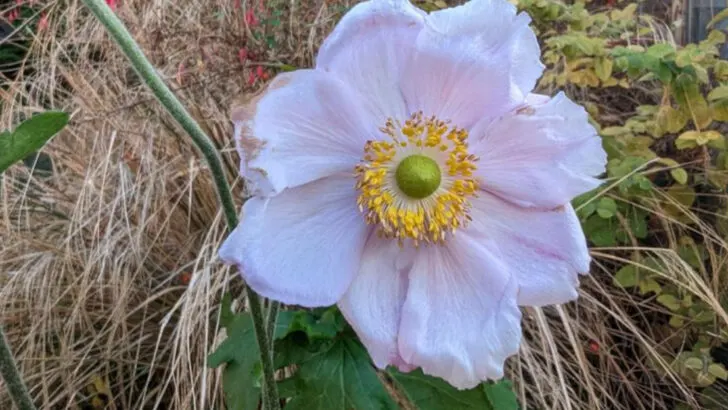Some plants thrive on neglect. Others? They’ll throw a fit if you love them too much. You water, you fertilize, you whisper sweet nothings—and suddenly that once-cheerful bloom is slumped in a soggy mess. Meanwhile, the scrappy little guy you forgot about? Thriving like it owns the place. It’s not fair, but it is helpful. Because once you know which perennials can handle a little chaos—and which ones demand spa treatment—you can finally stop second-guessing your garden. These 10 tough-as-nails plants are basically unkillable. And the other 10? Gorgeous, yes—but touchy. Proceed with caution.
Daylilies (Hemerocallis)
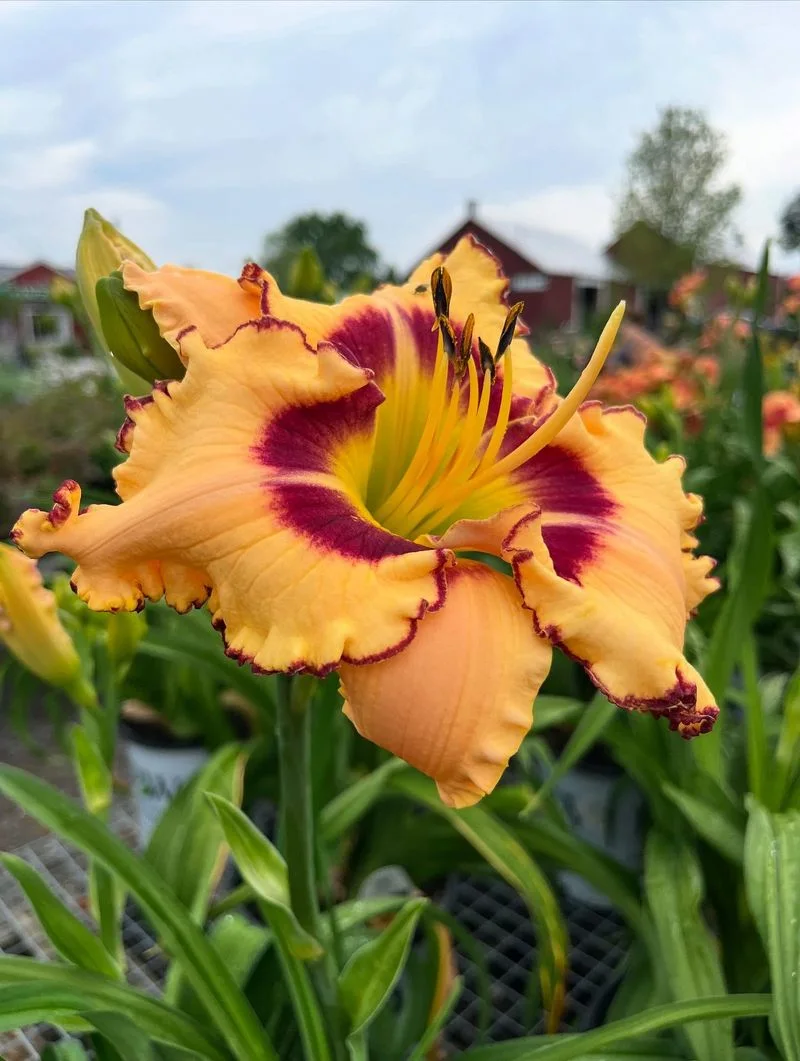
Daylilies are the epitome of resilience in the perennial world. Known for their ability to thrive in poor soil and withstand drought, these plants require little more than a sunny spot to flourish. Their cheerful, trumpet-shaped blooms bring joy year after year. Even when neglected, daylilies continue to perform, often blooming in the most unlikely places, such as abandoned roadsides. This hardy nature makes them a favorite among gardeners who seek beauty with minimal effort. Their impressive ability to adapt and survive is matched only by their vibrant display, making them an unkillable treasure in any garden.
Sedum ‘Autumn Joy’
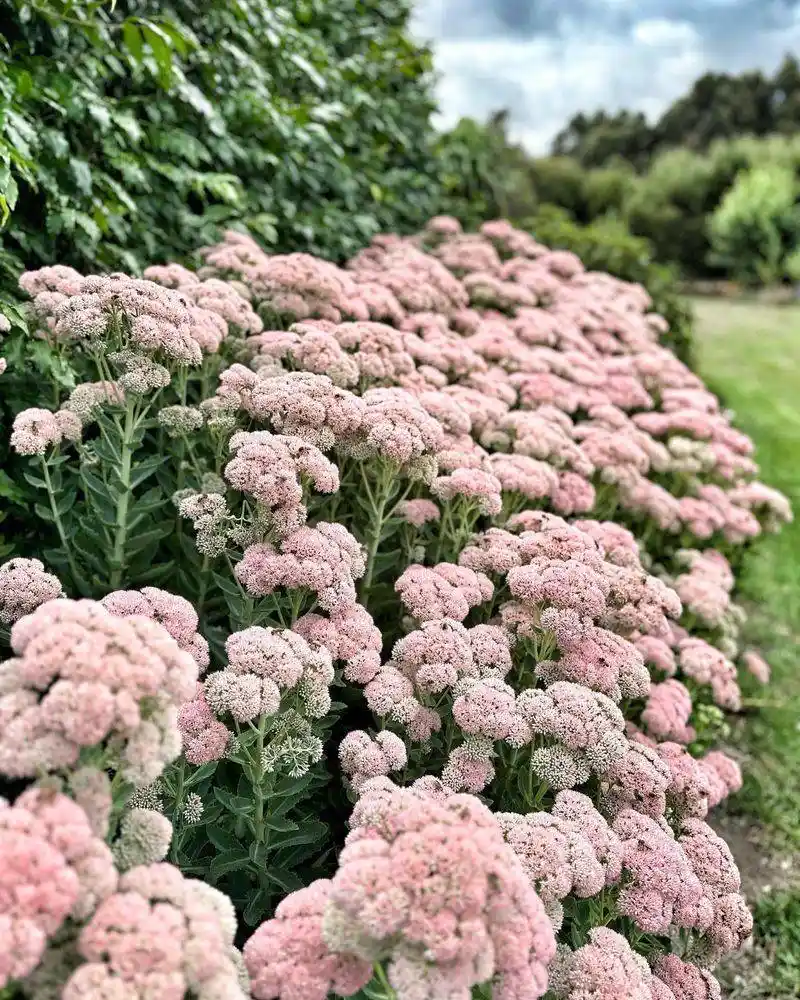
Sedum ‘Autumn Joy’ is a perennial that truly lives up to its name, bringing joy to any garden with its late-season color. This succulent-leaved plant thrives in dry, rocky soil, making it perfect for those who forget to water. Its fleshy stems withstand even the hottest days, rarely flopping as they hold up pink-to-rust flower heads. Whether planted in a rock garden or used for borders, Sedum ‘Autumn Joy’ adds texture and color with little demand on the gardener. Its ability to thrive in challenging conditions makes it a standout performer in the perennial lineup.
Coneflower (Echinacea)
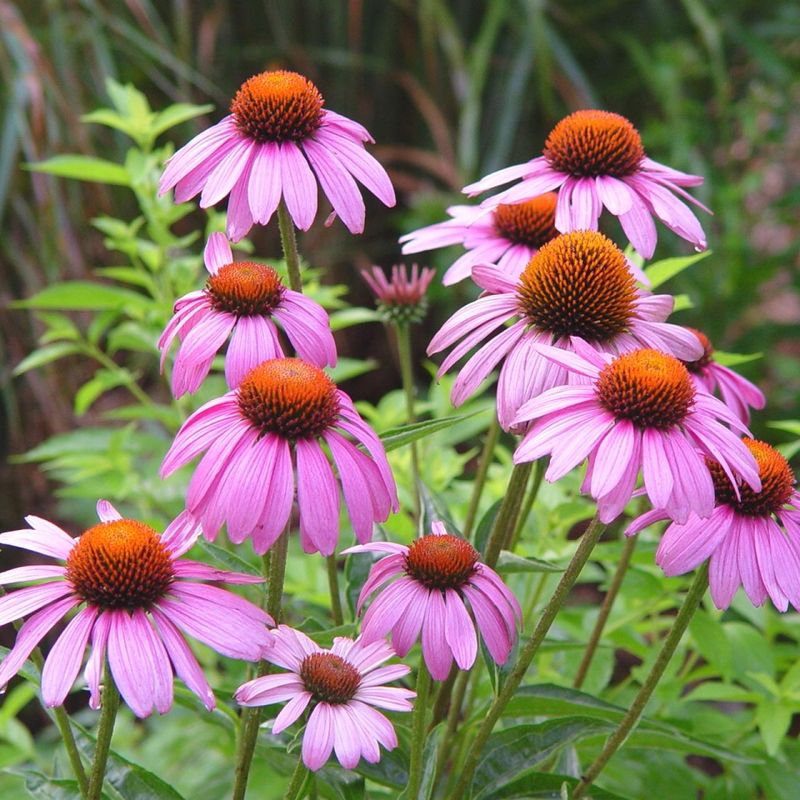
Coneflower, or Echinacea, is a perennial that resonates with grace and endurance. Its upright stems and long-lasting blooms make it a true garden staple. Known for surviving drought and clay soil, coneflowers flourish without much fuss. Although deadheading can encourage more blooms, these plants don’t require it to survive, often self-seeding and expanding naturally. Their resilience makes them a magnet for pollinators like butterflies and bees, adding a lively touch to any garden. With minimal care, coneflowers continue to enchant with their beauty and ecological contributions, making them a top choice for gardeners everywhere.
Black-Eyed Susan (Rudbeckia)
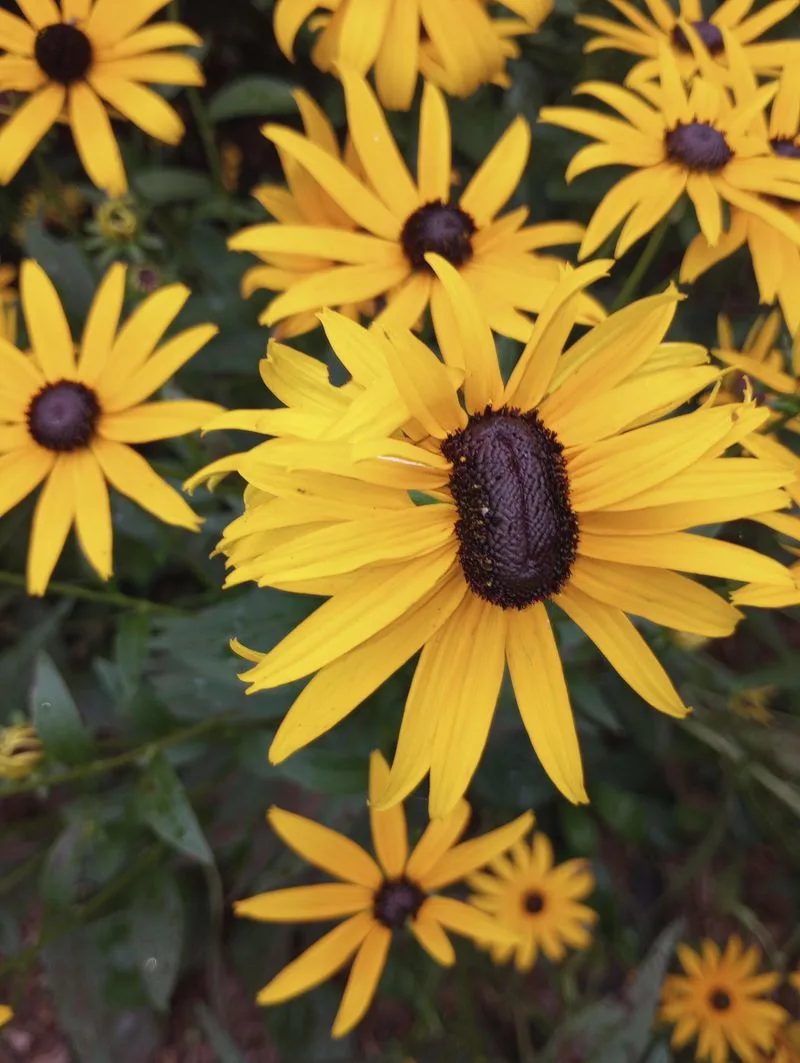
Black-Eyed Susan, or Rudbeckia, is a perennial that embodies the spirit of summer with its bright yellow daisies. Thriving in both sun and part shade, these flowers are unfazed by dry soil and bloom from midsummer through fall. Their dense growth habit helps crowd out weeds, reducing the need for constant maintenance. These hardy plants offer a burst of color with minimal effort, making them an ideal choice for gardeners seeking low-maintenance beauty. Their ability to thrive in diverse conditions and resist drought makes them a reliable and charming addition to any landscape.
Yarrow (Achillea)
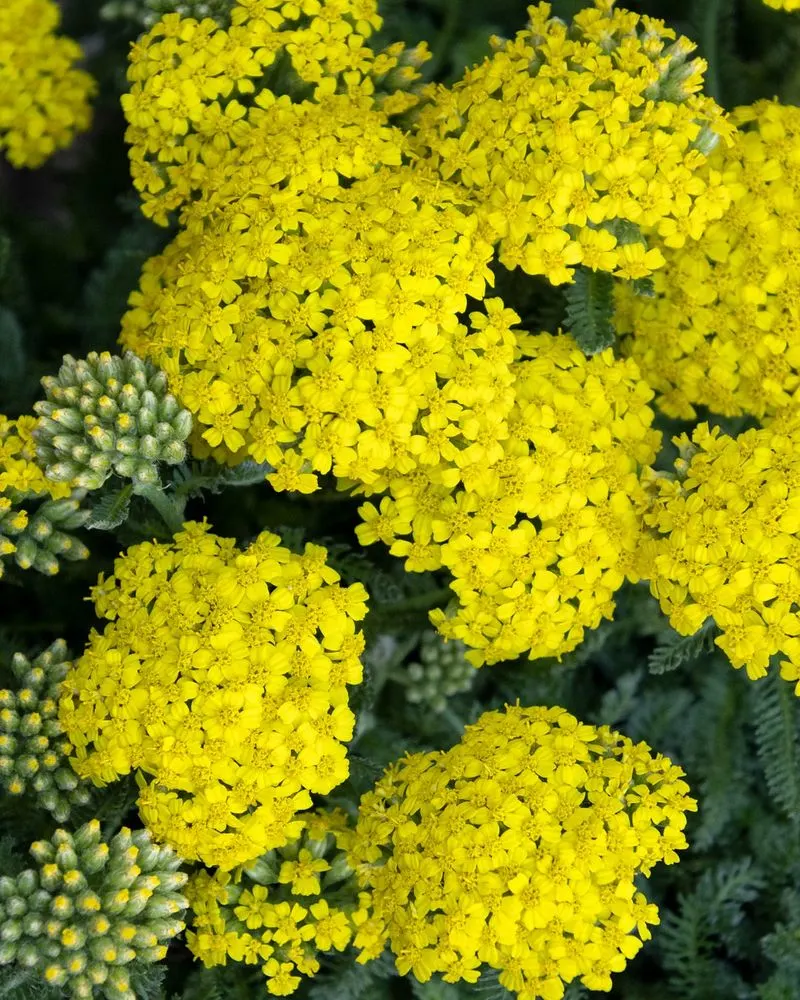
Yarrow, known scientifically as Achillea, is a perennial that thrives where many others would falter. Preferring hot, dry conditions, yarrow spreads steadily through underground rhizomes. Its flat flower clusters bloom for weeks, attracting an array of pollinators. Unlike many plants, yarrow prefers lean soil, making it ideal for areas with limited nutrients. Too much compost can cause it to flop, but in the right conditions, yarrow stands tall, offering shades of yellow, pink, or white. Its robust nature and appeal to pollinators make yarrow a must-have for gardeners seeking sustainability and beauty.
Hostas
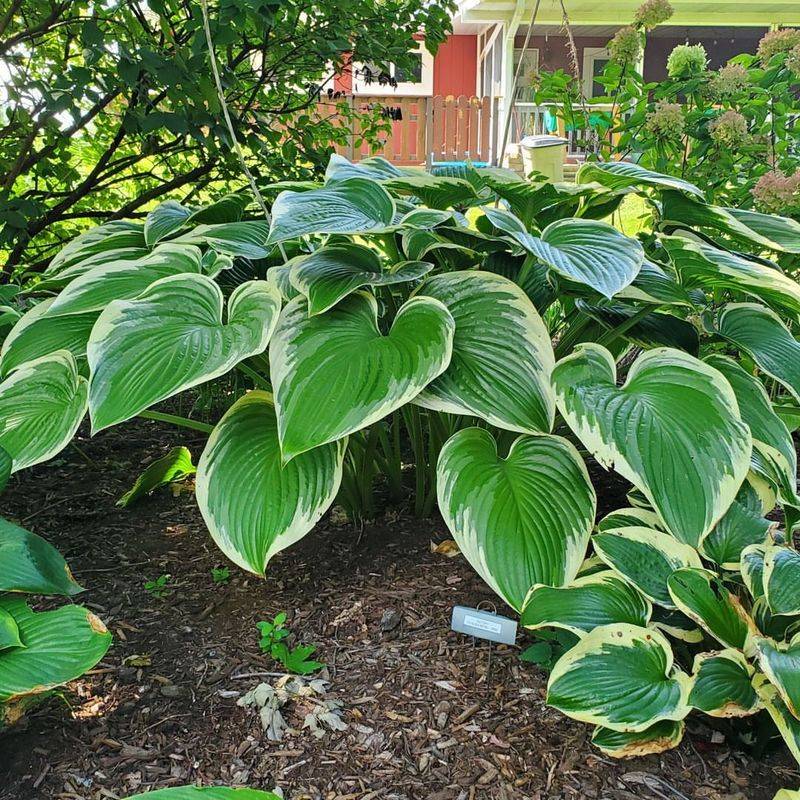
Hostas are the quintessential shade-loving perennials, known for their lush foliage and ability to thrive in less-than-ideal conditions. These plants grow larger each year, requiring minimal care once established. Mature hostas are particularly drought-tolerant, bouncing back each spring even if nibbled by deer or chewed by snails. Their diverse leaf shapes and colors add texture to shaded gardens, making them a reliable choice for understory plantings. Whether planted en masse or used as accents, hostas bring a sense of calm and elegance to any garden, thriving quietly in the shadows.
Catmint (Nepeta)
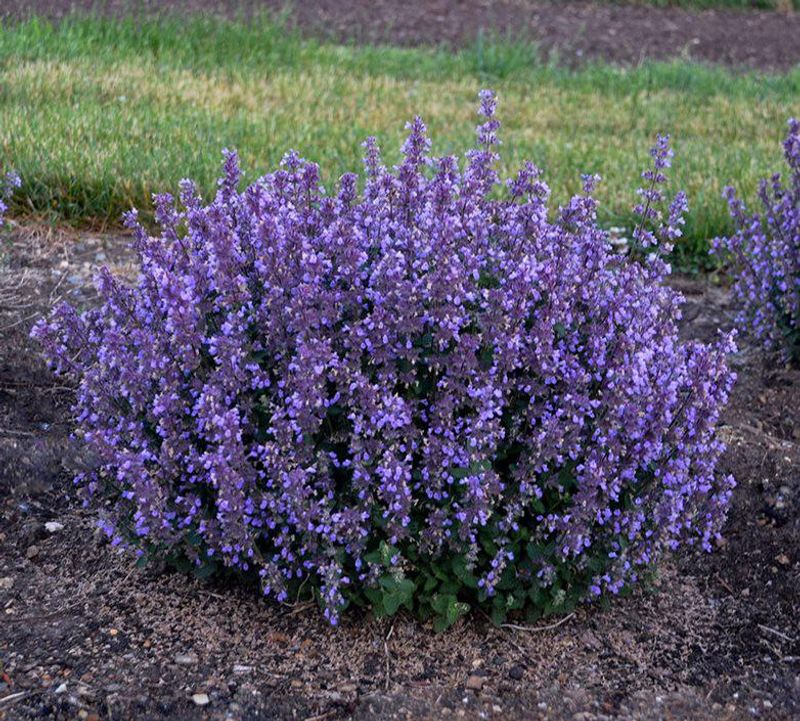
Catmint, or Nepeta, is a perennial that exudes charm and resilience. Known for its fast growth and continuous blooms from spring to fall, catmint thrives in heat and dry soil. Its lavender-blue flowers attract pollinators, adding life to any garden. Even when cut back midseason, catmint quickly rebounds with fresh growth and more blooms. Its sprawling nature makes it an excellent choice for borders or cascading over garden edges. With its delightful fragrance and robust performance, catmint brings a touch of whimsy to landscapes while requiring minimal care from the gardener.
Coreopsis (Tickseed)
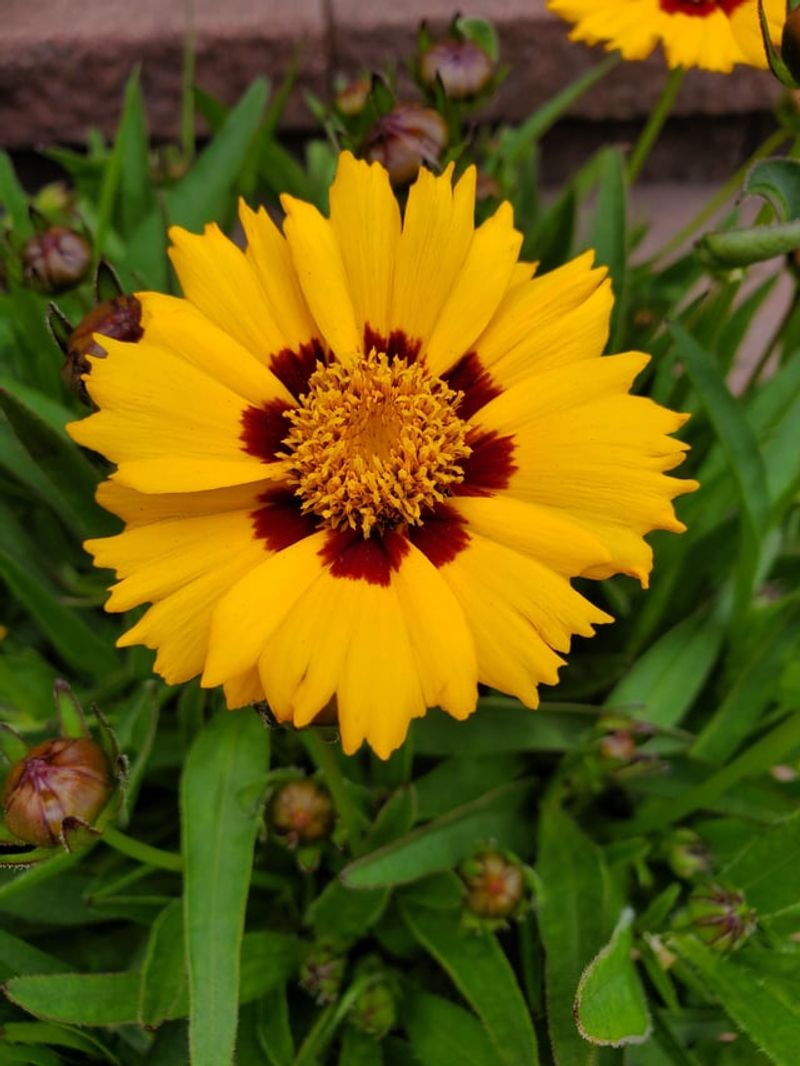
Coreopsis, affectionately known as Tickseed, is a perennial that defies the odds with its ability to bloom for months on end. This plant shrugs off heat, pests, and poor soil, making it a favorite for those seeking color without the fuss. Available in vibrant shades of yellow, orange, and red, Coreopsis lights up gardens with its lively presence. It thrives in crowded conditions, filling in quickly and effortlessly. Coreopsis is a testament to nature’s resilience, offering beauty and color in abundance while demanding little in return, a true treasure for any garden enthusiast.
Bee Balm (Monarda)
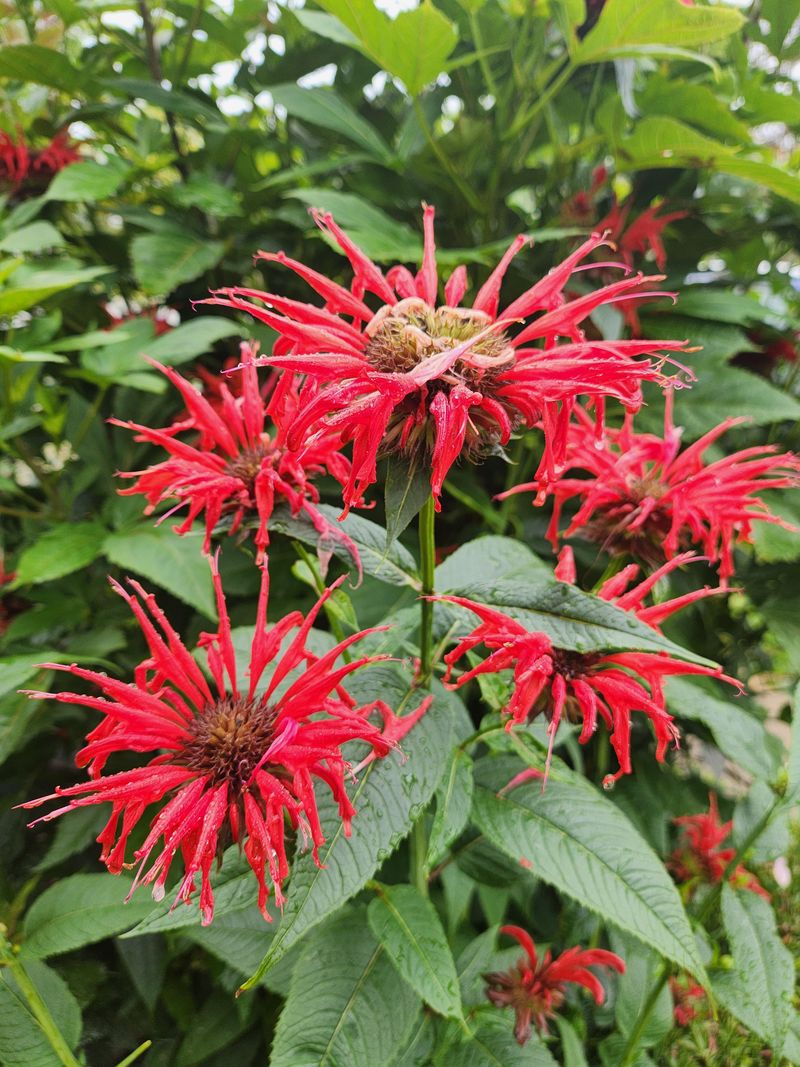
Bee Balm, or Monarda, is a perennial that brings vibrancy and life to any garden. Known for its fast-spreading nature, Bee Balm thrives in heavy soil and rain, producing spiky, colorful flowers in mid to late summer. Its allure extends beyond its beauty, drawing hummingbirds, bees, and butterflies to its blooms. This native plant adapts well to neglected corners, offering a burst of color and attracting wildlife. Bee Balm’s ability to thrive in challenging conditions and its ecological benefits make it a valuable addition to any garden, providing both visual splendor and environmental support.
Lamb’s Ear (Stachys byzantina)
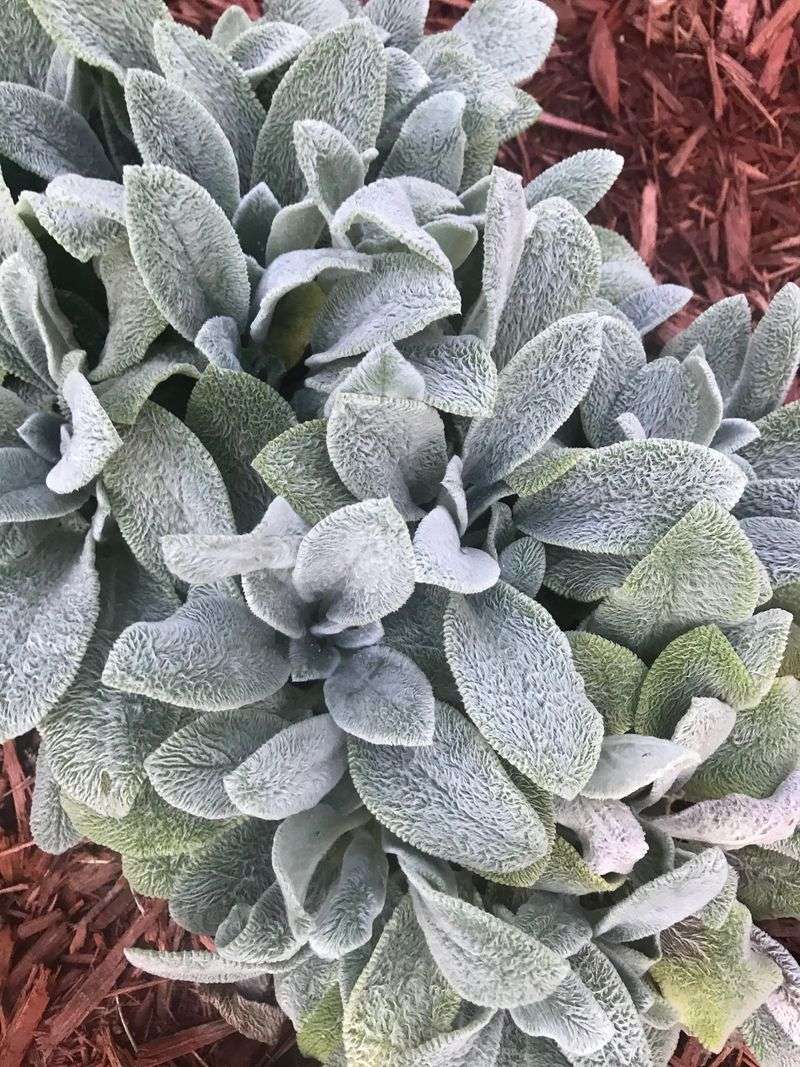
Lamb’s Ear, scientifically known as Stachys byzantina, is a perennial cherished for its unique tactile appeal. With fuzzy silver leaves, it thrives in drought and heat, making it a perfect choice for sunny gardens. While primarily grown for its texture, Lamb’s Ear can also produce charming purple flower spikes. Its soft leaves are beloved by children and serve as a living mulch, suppressing weeds and retaining soil moisture. Lamb’s Ear’s ability to add visual and textural interest to gardens with minimal water needs makes it a delightful and practical choice for gardeners seeking something special.
Lavender
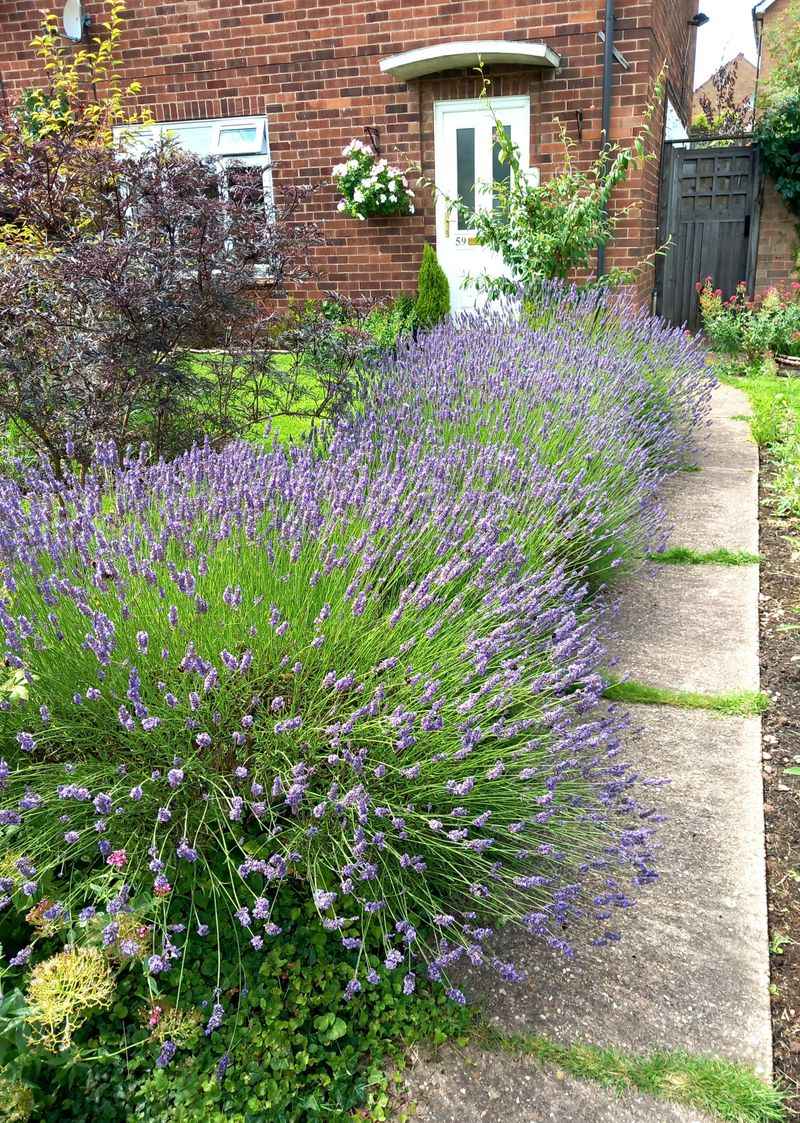
Lavender, famed for its aromatic fragrance and soothing color, thrives best in dry, lean soil and full sun. This perennial shies away from excessive water and rich soil, leading to root rot if over-cared-for. Lavender prefers its roots dry and airy, making overwatering a common mistake. Its dislike for “wet feet” requires gardeners to resist the urge to fuss. Once established, lavender rewards patience with its calming presence and delightful aroma. Its ability to thrive on neglect while offering sensory pleasure makes lavender a cherished choice for those who value beauty with simplicity.
Peonies
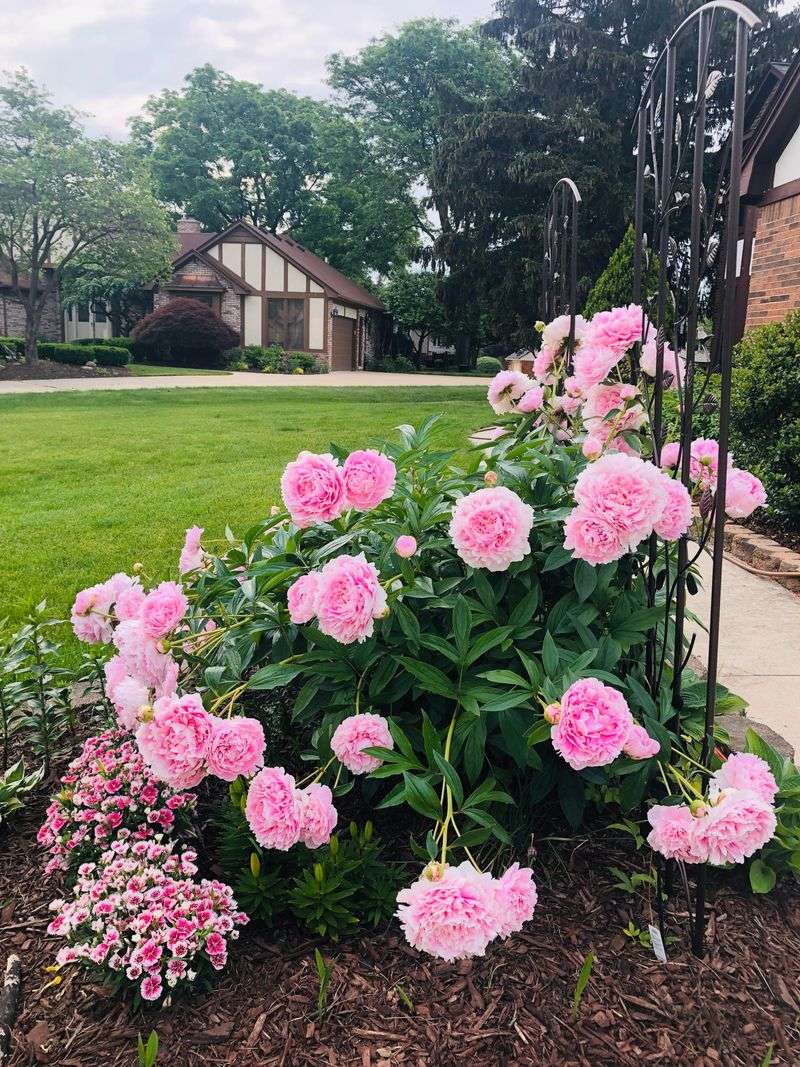
Peonies, with their lush, fragrant blooms, are the epitome of elegance in the perennial world. However, they can be temperamental if not left to their own devices. Over-fertilizing or planting them too deep can lead to years of sulking before they bloom again. Once established, peonies thrive with little intervention, rewarding gardeners with their breathtaking flowers each spring. Their beauty lies in their ability to stand on their own, requiring minimal fuss to flourish. With patience, peonies become a garden’s crowning glory, offering opulence and grace in abundance.
Bleeding Heart (Dicentra)
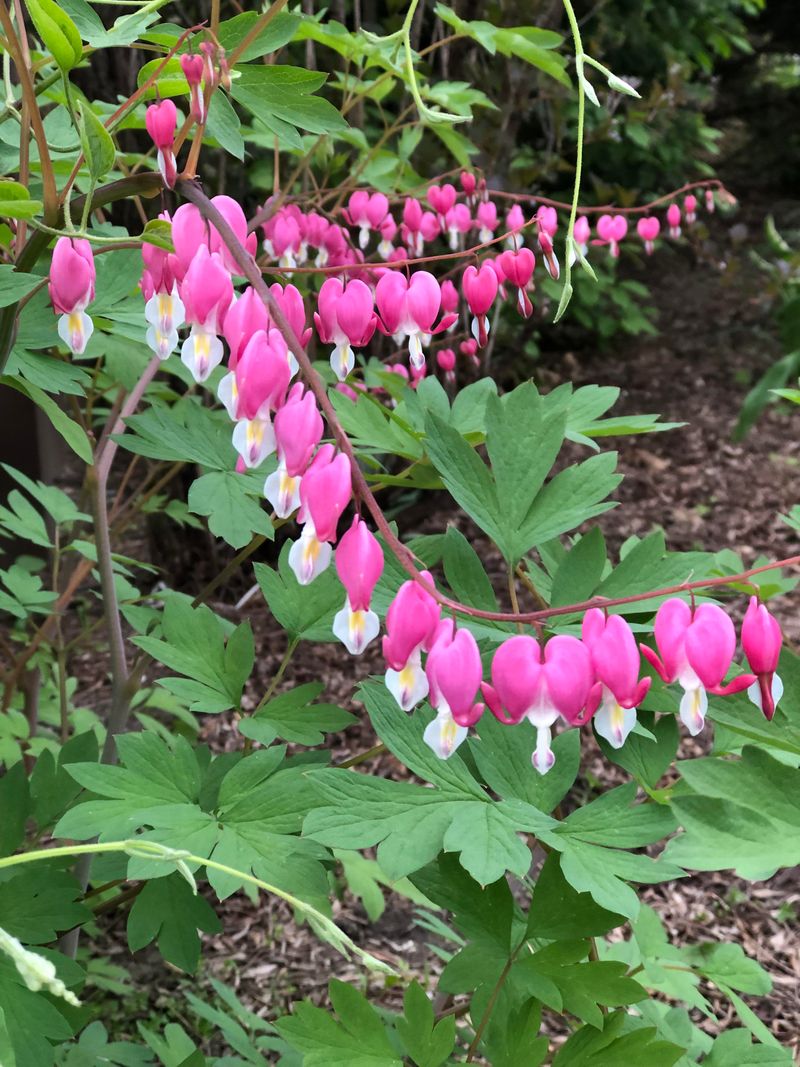
Bleeding Heart, or Dicentra, captivates with its heart-shaped blooms and delicate appearance. Blooming in spring, this perennial often goes dormant by midsummer, leaving gaps in the garden. Attempting to keep them green with extra water or shade often fails, as they follow a natural cycle. Embracing their dormancy allows other plants to fill the space, maintaining garden interest. Bleeding Heart’s charm lies in its fleeting beauty, adding a touch of romance and nostalgia to shaded areas. Their unique form and gentle presence make them a treasured addition to any garden.
Astilbe

Astilbe is a perennial that dances gracefully in the shade, with its feathery plumes adding a soft touch to gardens. While it enjoys moist soil, too much sun or fertilizer can lead to burnt edges and weak blooms. Finding the right balance of moisture is key, as Astilbe dislikes soggy roots. Overwatering in an attempt to keep it happy often backfires. When provided with the right conditions, Astilbe offers a stunning display that transforms any shaded area into a tranquil retreat, making it a worthwhile yet delicate addition to the garden.
Delphinium
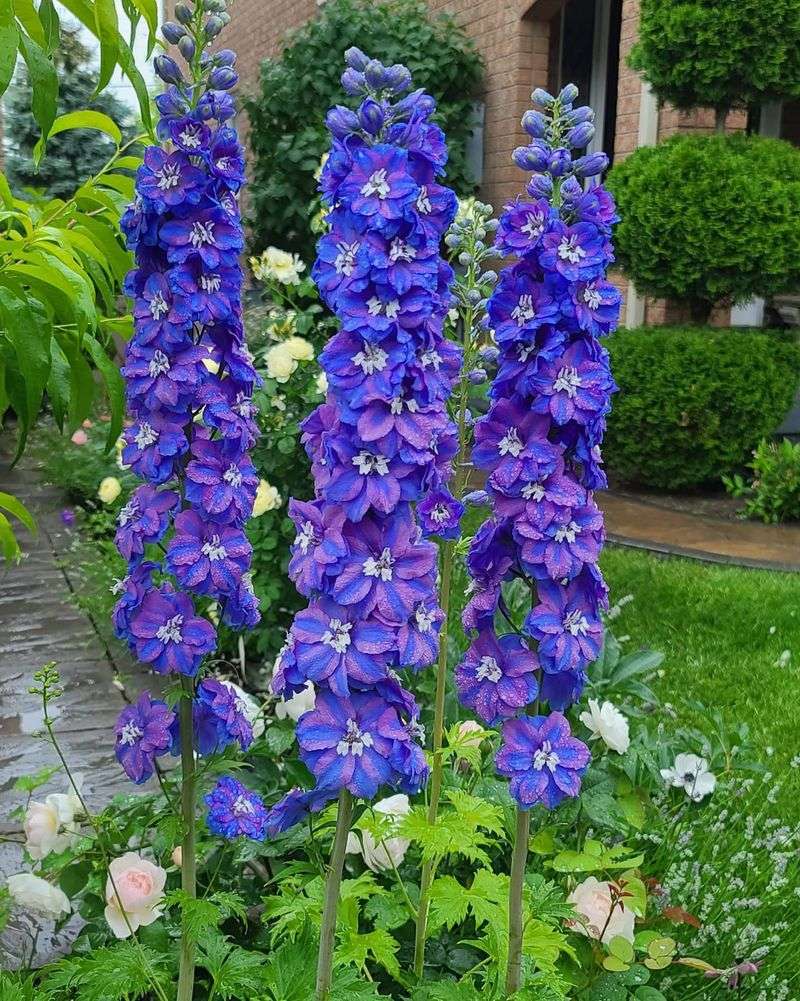
Delphinium stands tall and proud with its dramatic spires, creating a striking presence in the garden. Despite their beauty, these perennials are often short-lived if they receive too much attention. Heavy feeding and constant watering can lead to rot or floppy stems, as they require well-drained soil. Known for their high-maintenance nature, Delphiniums demand a delicate balance of care. When treated just right, they reward gardeners with a spectacular show of color, but too much help can quickly turn into hindrance, making them a beautiful yet demanding plant choice.
Lupine (Lupinus spp.)
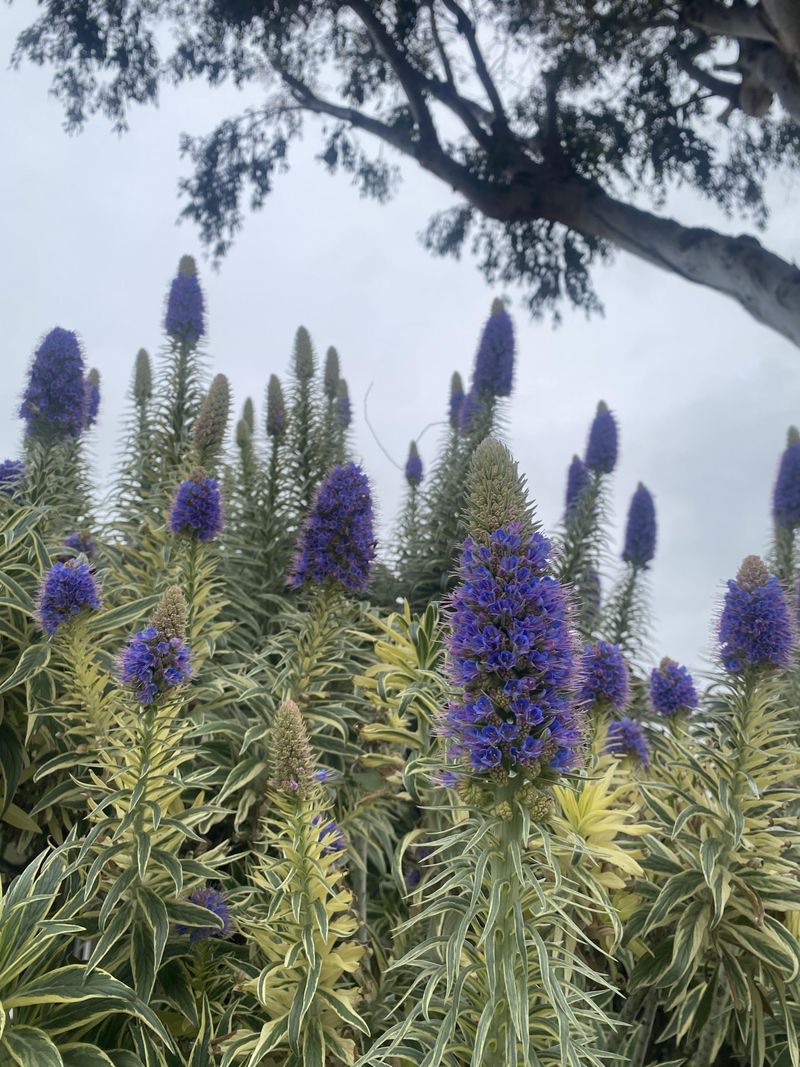
Lupines, with their vibrant spires, add a touch of wild beauty to gardens. Preferring cool climates, they don’t appreciate rich soil or overwatering, often failing to return if pampered. Lupines are best left to their own devices, allowing nature to take its course. Their colorful presence is short-lived, and attempting to extend their bloom season usually backfires. Lupines bring a burst of color and a sense of untamed elegance to landscapes, making them a beloved choice for gardeners who appreciate their natural, unrefined charm and seasonal appearance.
Coral Bells (Heuchera)
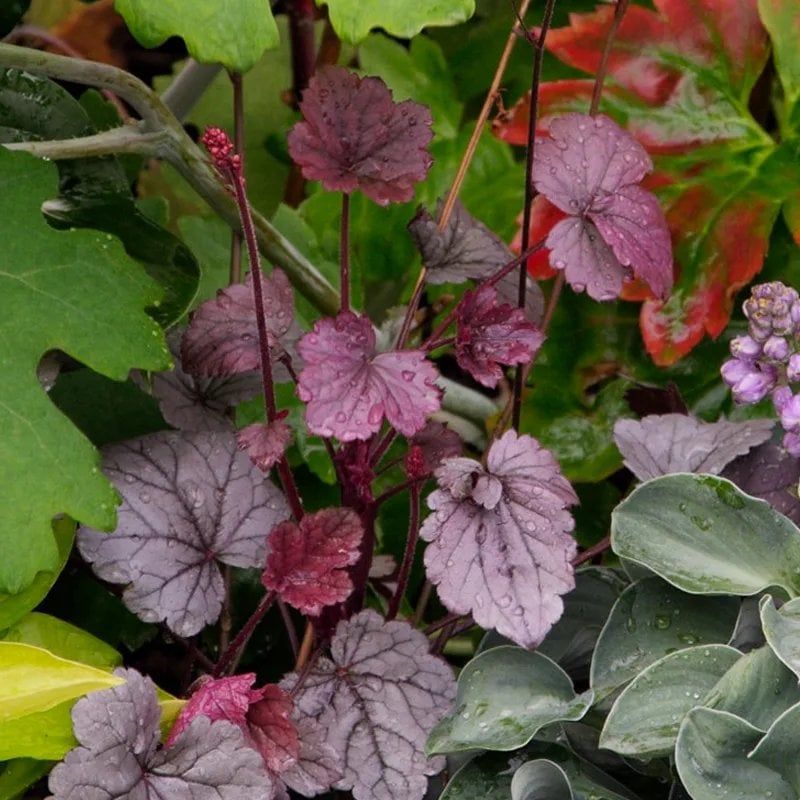
Coral Bells, scientifically known as Heuchera, thrive in shady spots with their colorful foliage creating a vibrant tapestry. However, they can be prone to crown rot if planted too deep or overwatered, requiring well-draining soil. Their roots may “heave” out of the soil in winter, necessitating careful planting. Despite these quirks, they offer a stunning array of colors, making them a favorite for shady gardens. With a light touch and attention to planting details, Coral Bells provide a splash of color and texture, enhancing garden diversity with their unique appeal.
Japanese Anemone
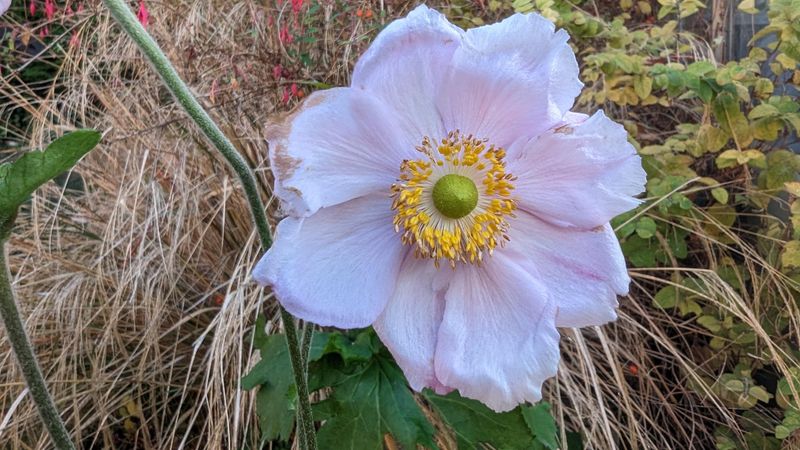
Japanese Anemone, with its late-season blooms, brings elegance and a hint of romance to gardens. Preferring to be left undisturbed, these perennials can take a year or two to flower after being moved. Overwatering or dividing too often can delay their blooming, as they thrive on a touch of neglect. When allowed to settle in, Japanese Anemones offer a breathtaking display, enhancing the garden with their delicate presence. Their ability to withstand cooler temperatures and their resistance to pests make them a cherished choice for those who adore subtle beauty.
Hellebores (Lenten Rose)
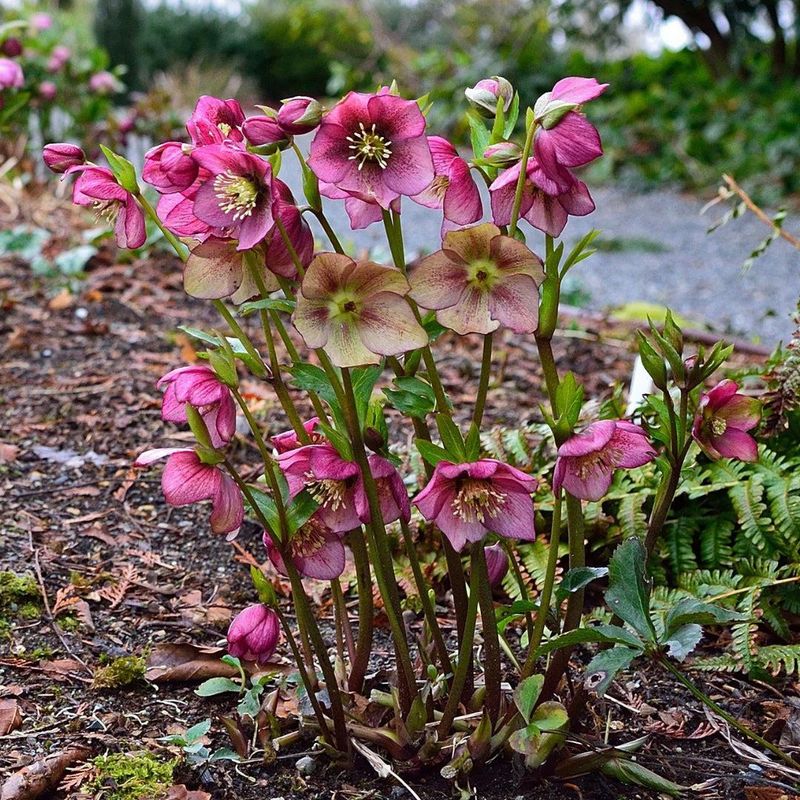
Hellebores, also known as Lenten Roses, thrive with a touch of neglect, offering beauty when most other plants are still dormant. Their shallow roots dislike being disturbed, and too much fertilizer can damage these delicate structures. Hellebores reward patience rather than pampering, flourishing quietly in shaded gardens. Their early spring blooms provide a much-needed splash of color, with hues of pink, cream, and green. Hellebores are a testament to resilience and understated elegance, making them a prized addition to any garden seeking beauty in simplicity.
Iris (Bearded Types)
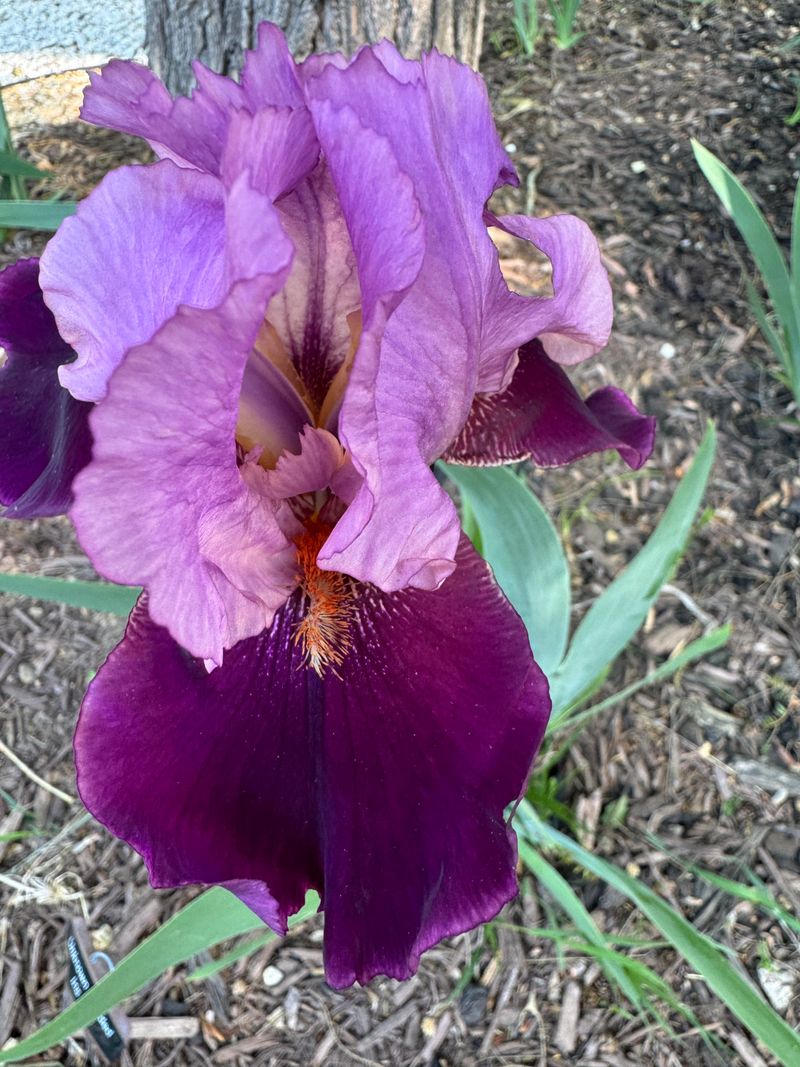
Bearded Iris, with their striking flowers, are a favorite among gardeners looking for a bold statement. These sun-loving plants require well-drained soil, as they rot quickly if overwatered or buried too deep. Their rhizomes must be exposed and well-spaced to ensure healthy growth. A little crowding or mulch over the roots can prevent flowering for a season. With the right care, Bearded Iris provide a spectacular display of color and form, becoming a centerpiece in any garden. Their unique beauty and requirements make them a rewarding yet challenging choice.

